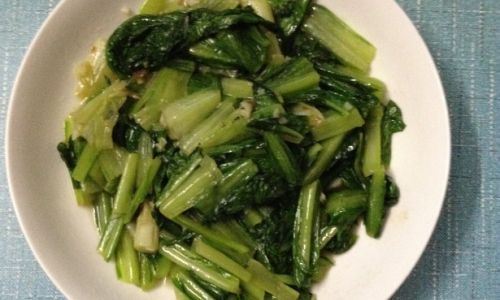Introduction
Beef skewers, or beef kebabs as they are often called, are a culinary delight that transcends borders and cultures. From the smoky streets of Istanbul to the backyard barbecues of Texas, these tender morsels of marinated beef threaded onto skewers and grilled to perfection have captured the hearts and palates of food lovers worldwide. This article delves into the intricacies of creating the ultimate beef skewers, exploring everything from ingredient selection to advanced grilling techniques. Whether you’re a novice cook or a seasoned grill master, this guide will equip you with the knowledge to elevate your skewers from ordinary to extraordinary.
The Anatomy of Perfect Beef Skewers
Creating memorable beef skewers begins with understanding the key elements that contribute to their flavor, texture, and visual appeal. The process can be broken down into five critical components:
- Meat Selection: The foundation of exceptional skewers.
- Marination: The secret weapon for infusing depth and tenderness.
- Skewer Assembly: Balancing aesthetics with practicality.
- Grilling Technique: Mastering heat and timing.
- Finishing Touches: Enhancing flavor and presentation.
Meat Selection: Beyond the Butcher’s Counter
The journey to perfect skewers starts at the meat counter. While cuts like sirloin, ribeye, and flank steak are popular choices, each offers distinct advantages:
- Sirloin: Lean and moderately tender, with a robust beefy flavor.
- Ribeye: Marbled with fat, ensuring juiciness and richness.
- Flank Steak: Thin and versatile, ideal for quick cooking.
- Skirt Steak: Intensely beefy, best when marinated and cooked over high heat.
For optimal results, opt for cuts with visible fat marbling, as this melts during cooking, basting the meat and preventing dryness. If budget is a concern, chuck eye roll or top round can be tenderized through marination.

Marination: The Flavor Alchemy
Marination is not merely a preliminary step—it’s a transformational process. A well-crafted marinade accomplishes three goals:
- Tenderizing: Enzymes (e.g., from pineapple or yogurt) break down tough proteins.
- Flavor Infusion: Acidic components (citrus, vinegar) and aromatics (garlic, herbs) penetrate the meat.
- Moisture Retention: Oils and dairy products create a protective barrier during grilling.
Classic Beef Skewer Marinade Recipe
- 1/4 cup soy sauce (or tamari for gluten-free)
- 1/4 cup olive oil
- 3 tbsp Worcestershire sauce
- 2 tbsp honey or brown sugar
- 4 garlic cloves, minced
- 1 tbsp smoked paprika
- 1 tsp black pepper
- 1/4 cup red wine vinegar
- 1/2 cup fresh herbs (rosemary, thyme, parsley), chopped
- Zest of 1 lemon
Pro Tip: For a Middle Eastern twist, substitute soy sauce with pomegranate molasses and add 1 tsp of ground cumin.
Marination Time Mythbusters
- Overnight vs. Quick Marination: While 24 hours is ideal for deep flavor, even 30 minutes can make a difference.
- Avoid Citrus Overkill: Acidic marinades beyond 2 hours can “cook” the meat, resulting in a mushy texture.
Skewer Assembly: Form Meets Function
The way you thread meat onto skewers impacts cooking evenness and presentation:
- Uniformity: Cut meat into 1.5-inch cubes for consistent cooking.
- Spacing: Leave 1/4-inch gaps between pieces to ensure even heat distribution.
- Layering: Alternate meat with vegetables (bell peppers, onions, cherry tomatoes) for texture contrast.
Skewer Types: Metal vs. Bamboo
- Metal Skewers: Durable, reusable, and conduct heat for better browning.
- Bamboo Skewers: Affordable and disposable, but require 30-minute soaking in water to prevent burning.
Grilling Technique: Fire Mastery
Grilling beef skewers is a dance with fire—precision and intuition are equally important.
Preheating the Grill
- Gas Grills: Preheat to medium-high (400–450°F/200–230°C).
- Charcoal Grills: Arrange coals for direct heat grilling, aiming for a 3-second hand test (hold your hand 5 inches above the grate; if you can tolerate the heat for 3 seconds, it’s ready).
Cooking Process
- Oil the Grates: Prevent sticking by brushing grates with vegetable oil.
- Arrange Skewers: Place them at a 45-degree angle to the grates for optimal char marks.
- Rotate, Don’t Flip: Turn skewers every 2–3 minutes to ensure even caramelization.
- Internal Temperature: Cook to 130°F (54°C) for medium-rare, 140°F (60°C) for medium.
Avoiding Common Pitfalls
- Overcrowding the Grill: Maintain 2 inches between skewers to prevent steaming.
- Searing vs. Steaming: Leave the lid open to focus on direct heat caramelization.
- Resting Period: Let skewers rest for 5 minutes post-grill to redistribute juices.
Finishing Touches: Elevating the Experience
The final flourishes can elevate skewers from good to gourmet:
- Glazes: Brush with a mixture of honey, soy sauce, and chili flakes during the last 2 minutes of grilling.
- Herb Sprinkles: Fresh cilantro, mint, or parsley add vibrancy.
- Sauces: Serve with tzatziki, chimichurri, or a spicy harissa aioli.
Advanced Techniques for the Ambitious Cook
- Sous Vide Skewers: Cook meat in a water bath at 130°F (54°C) for 2 hours, then sear on the grill for perfect edge-to-edge doneness.
- Smoke Infusion: Add wood chips (hickory, mesquite) to charcoal for a subtle smoky aroma.
- Plating: Arrange skewers over a bed of saffron rice or grilled pita bread for a restaurant-worthy presentation.
Troubleshooting Guide
| Issue | Cause | Solution |
|———————-|——————————–|———————————–|
| Dry, Tough Meat | Overcooking or lean cut | Use marbling-rich cuts; monitor temp |
| Uneven Cooking | Inconsistent meat sizes | Cut pieces uniformly |
| Skewers Sticking | Insufficiently oiled grates | Brush grates with oil before cooking |
| Lack of Flavor | Inadequate marination time | Marinate for at least 4 hours |

Pairing Suggestions
- Beverages: Full-bodied red wines (Cabernet Sauvignon), crisp lagers, or mint lemonade.
- Sides: Grilled vegetables, tabbouleh salad, or garlic-buttered couscous.
- Dips: Garlic yogurt sauce, roasted red pepper hummus, or spicy peanut sauce.
Cultural Variations: A World Tour of Skewers
- Japanese Yakitori: Skewers of chicken thigh meat, but the technique applies beautifully to beef with a tare (soy-based glaze).
- Turkish Shish Kebab: Marinated in yogurt, garlic, and paprika, often served with rice pilaf.
- Brazilian Espetinho: Small, flavorful skewers grilled over open flames, paired with chimichurri.
Health-Conscious Modifications
- Lean Proteins: Opt for sirloin or eye of round, and trim excess fat.
- Vegetable-Heavy Skewers: Use zucchini, mushrooms, and eggplant to reduce meat intake.
- Low-Sodium Marinades: Replace soy sauce with coconut aminos and use herbs for flavor.
Conclusion
Beef skewers are more than a meal—they’re a canvas for culinary creativity. By mastering meat selection, marination, grilling techniques, and presentation, you can transform simple ingredients into a feast that delights the senses. Whether you’re hosting a summer cookout or craving a weeknight indulgence, the art of the skewer is a skill that rewards patience and passion. So fire up the grill, thread those skewers with care, and savor the symphony of flavors that only perfectly cooked beef can deliver.
Frequently Asked Questions
-
Can I use frozen beef for skewers?
Yes, but thaw it completely and pat dry to prevent steaming during grilling. -
How do I prevent vegetables from burning?
Parboil denser veggies (potatoes, carrots) before skewering, or place them on separate skewers from meat. -
What’s the best way to reheat leftover skewers?
Reheat gently in a 350°F (175°C) oven for 5–7 minutes to retain moisture. -
Can I make skewers indoors?
Absolutely! Use a grill pan or broiler, adjusting cooking times to prevent smoking. -
How long do marinated skewers keep?
Marinated meat can be refrigerated for up to 24 hours; beyond that, enzymes may compromise texture.
With this guide in hand, you’re now equipped to embark on a skewering adventure that will impress even the most discerning palates. Happy grilling!





0 comments